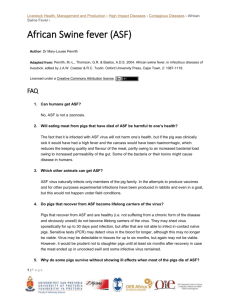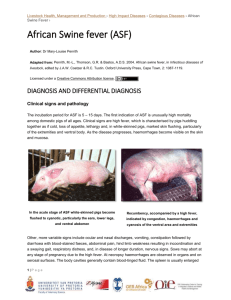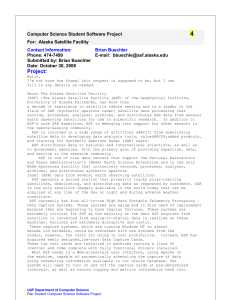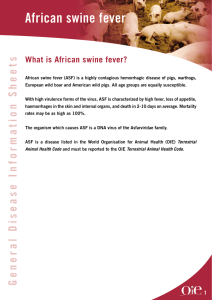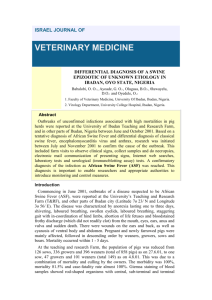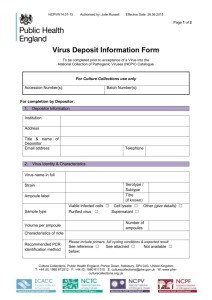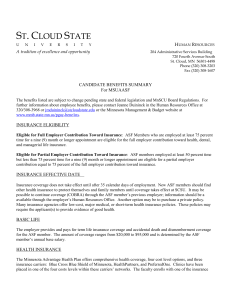african_swine_fever_4_pathogenesis
advertisement
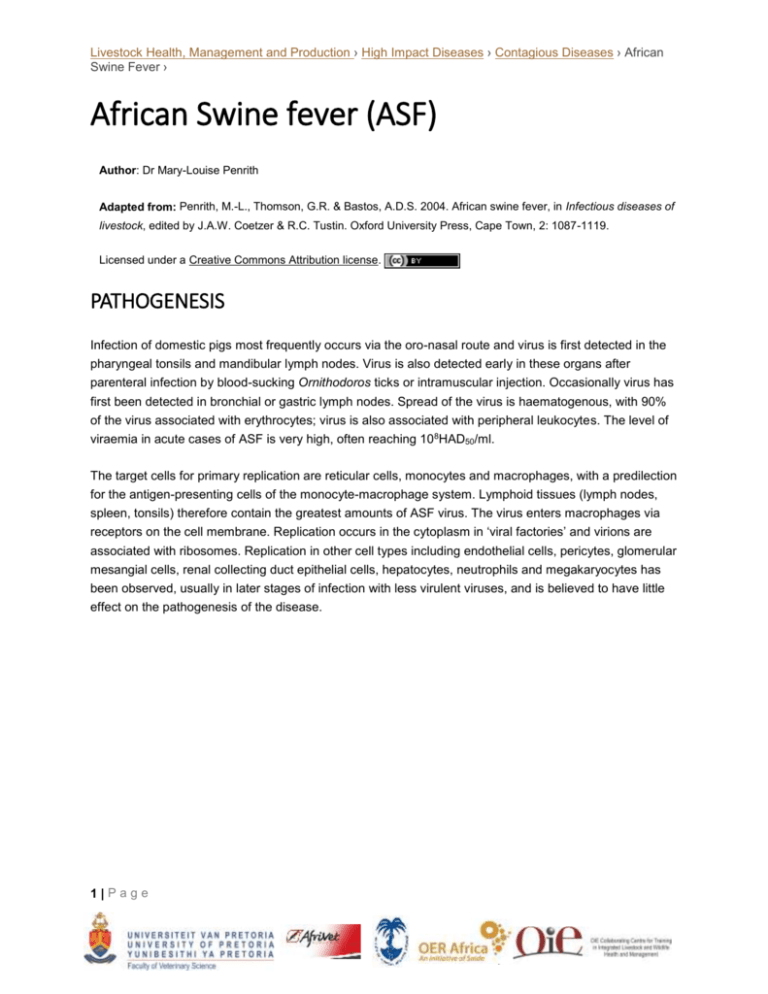
Livestock Health, Management and Production › High Impact Diseases › Contagious Diseases › African Swine Fever › African Swine fever (ASF) Author: Dr Mary-Louise Penrith Adapted from: Penrith, M.-L., Thomson, G.R. & Bastos, A.D.S. 2004. African swine fever, in Infectious diseases of livestock, edited by J.A.W. Coetzer & R.C. Tustin. Oxford University Press, Cape Town, 2: 1087-1119. Licensed under a Creative Commons Attribution license. PATHOGENESIS Infection of domestic pigs most frequently occurs via the oro-nasal route and virus is first detected in the pharyngeal tonsils and mandibular lymph nodes. Virus is also detected early in these organs after parenteral infection by blood-sucking Ornithodoros ticks or intramuscular injection. Occasionally virus has first been detected in bronchial or gastric lymph nodes. Spread of the virus is haematogenous, with 90% of the virus associated with erythrocytes; virus is also associated with peripheral leukocytes. The level of viraemia in acute cases of ASF is very high, often reaching 108HAD50/ml. The target cells for primary replication are reticular cells, monocytes and macrophages, with a predilection for the antigen-presenting cells of the monocyte-macrophage system. Lymphoid tissues (lymph nodes, spleen, tonsils) therefore contain the greatest amounts of ASF virus. The virus enters macrophages via receptors on the cell membrane. Replication occurs in the cytoplasm in ‘viral factories’ and virions are associated with ribosomes. Replication in other cell types including endothelial cells, pericytes, glomerular mesangial cells, renal collecting duct epithelial cells, hepatocytes, neutrophils and megakaryocytes has been observed, usually in later stages of infection with less virulent viruses, and is believed to have little effect on the pathogenesis of the disease. 1|Page Livestock Health, Management and Production › High Impact Diseases › Contagious Diseases › African Swine Fever › Acute ASF is characterized by haemorrhage in multiple organs as a result of consumption coagulopathy and increased vascular permeability due to inflammatory mediators released by infected macrophages The picture shows normal clot retraction in the tube on Abnormal blot clot removed from blood the left and delayed clot retraction in the collecting tube tube on the right Widespread destruction of lymphocytes and marked lymphopenia are features of ASF but replication does not occur in lymphocytes. The loss of lymphocytes is due to apoptosis (programmed cell death) that results from the release of cytokines by affected macrophages, in particular tumour necrosis factor α (TNF-α) and interleukin 1α (IL-1α). A protein product P21 of a highly conserved ASF virus gene is present 2|Page Livestock Health, Management and Production › High Impact Diseases › Contagious Diseases › African Swine Fever › throughout the infection cycle but it does not prevent massive destruction of lymphocytes. Although the loss of lymphocytes must result in immune suppression, which is probably to the advantage of the ASF virus, pigs usually die of acute ASF before secondary infections are observed. In the subacute and chronic cases of ASF reported, especially from the Iberian Peninsula, secondary infections undoubtedly contributed to the clinical signs and pathology. Haemorrhage in multiple organs is the most striking feature of ASF and its cause has been extensively debated. Thrombocytopenia is sometimes but not always a feature of ASF, and it was speculated that this could be due to a direct effect of the virus on thrombocyte production or survival. However, replication in megakaryocytes has been found to be minimal in most studies. It is generally accepted that impaired haemostasis is due to increased vascular permeability as a result of the effects of active substances released by infected and destroyed macrophages. The most important vascular changes are thought to result from the effect of inflammatory mediators secreted by the infected macrophages, including prostaglandin E2, that activate the clotting cascade and finally cause disseminated intravascular coagulation. Death is due to shock and/or excessive fluid exudation in the lungs. The latter is ascribed to activation of pulmonary intravascular macrophages with consequent release of cytokines, including TNFα and IL-1α, and oxygen radicals. Thrombocytopenia if present is likely due to consumption coagulopathy. 3|Page
